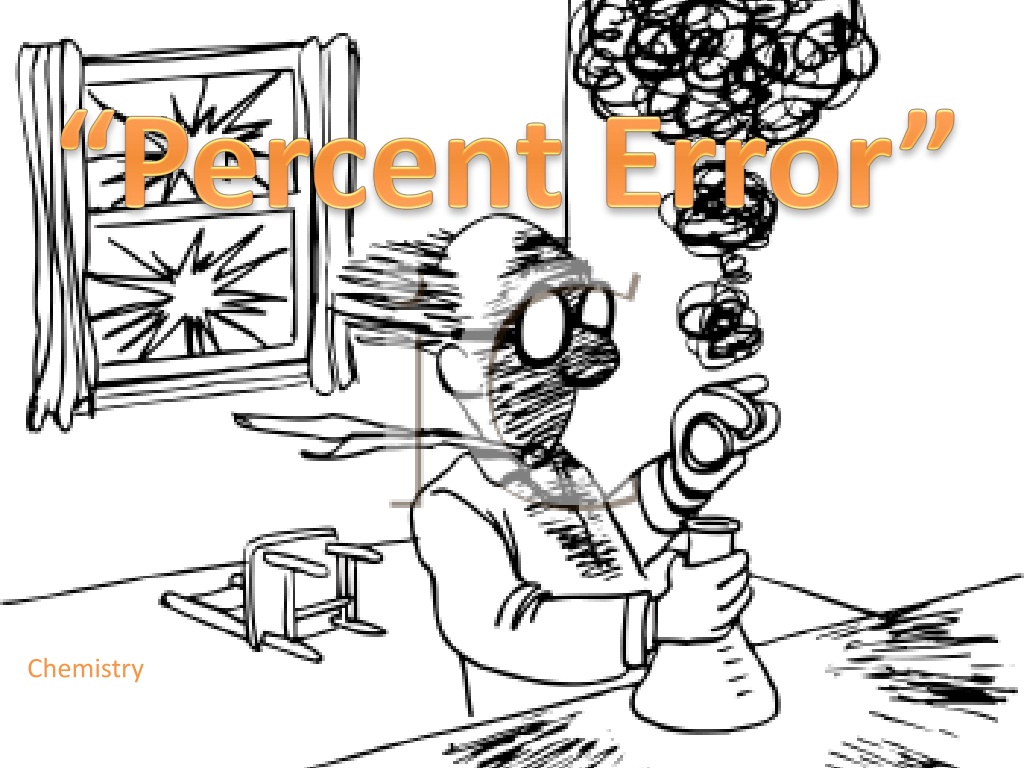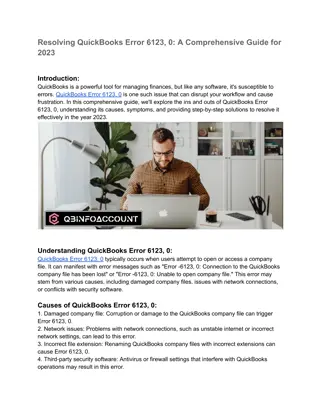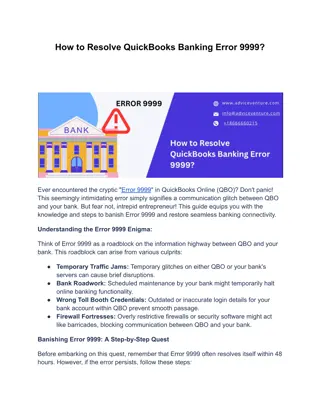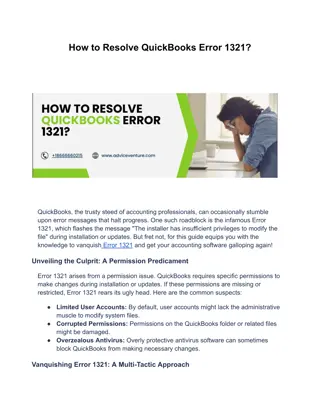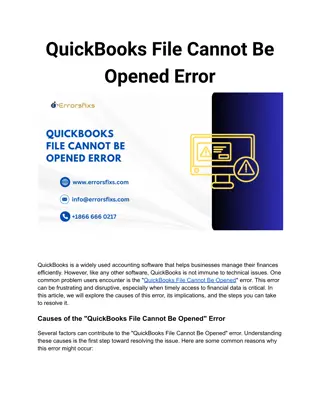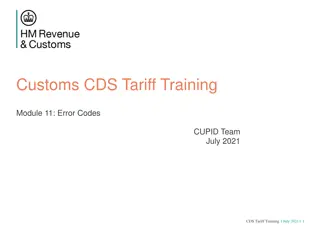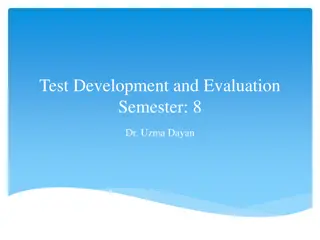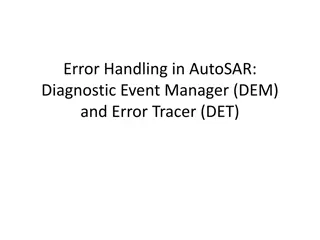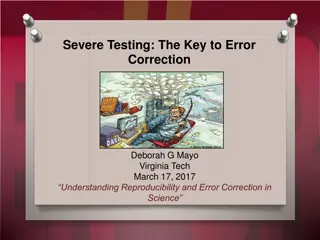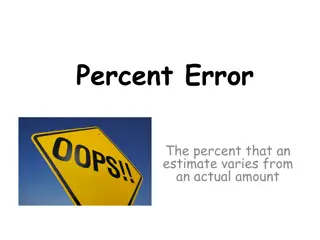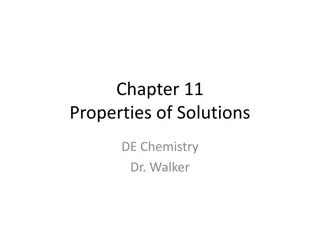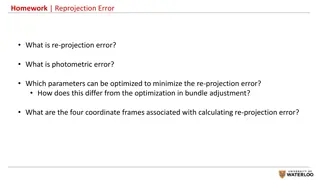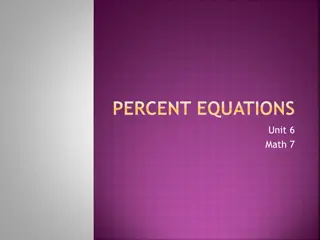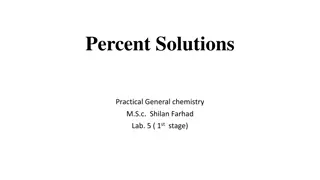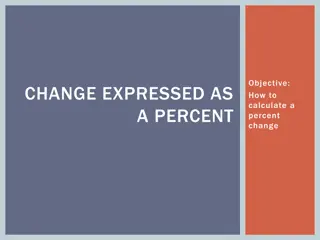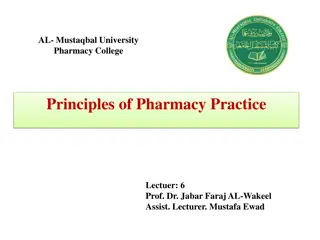Understanding Percent Error in Chemistry
In chemistry, understanding the concept of percent error is crucial for evaluating the accuracy of experimental results compared to accepted values. This post covers the definitions of accepted and experimental values, the formula for calculating percent error, and provides examples and practice problems to enhance comprehension.
Download Presentation

Please find below an Image/Link to download the presentation.
The content on the website is provided AS IS for your information and personal use only. It may not be sold, licensed, or shared on other websites without obtaining consent from the author. Download presentation by click this link. If you encounter any issues during the download, it is possible that the publisher has removed the file from their server.
E N D
Presentation Transcript
I.) Accepted vs. Experimental Value A.) ACCEPTED VALUE value of a substance accepted by all scientists B.) EXPERIMENTAL VALUE value of a substance that results in a lab setting
C.) Formula for Calculating Percent Error 1.) The difference between the accepted C.) Formula for Calculating Percent Error 1.) The difference between the accepted value and the experimental value is the PERCENT ERROR. value and the experimental value is the percent error. Error = experimental value accepted value Error = experimental value accepted value
C.) Example Suppose you use a thermometer to measure the boiling point of pure water at standard atmospheric pressure. The thermometer reads 99.1oC. You know the accepted value for the boiling point of water is 100.0oC. What is the percent error? 100oC-99.1oC x 100= 0.90% 100oC
PRACTICE PROBLEMS 1.) Samantha S. Sloppiness measured the volume of her soda before she drank it for her midmorning snack. She measured the volume of the 12 oz. bottle to be 14 oz. |12 oz -14 oz|x 100 =16.7% 12 oz
2.) Henry Heavyfoot was just arrested for speeding by Officer Hernandez for traveling 65 mph in a 55 mph zone. Henry claimed his speedometer said 55 mph not 65 mph. |55 mph-65 mph| x 100 = 18 % 55 mph
3.) A student measures the mass and volume of a piece of copper in the laboratory and uses his data to calculate the density of the metal. According to his results, the copper has a density of 8.37 g/cm3. Curious about the accuracy of his results, the student consults a reference table and finds that the accepted value for the density of copper is 8.92 g/cm3. What would be the student's percent error? |8.92 g/cm3- 8.37 g/cm3 | x 100 = 6.17 % 8.92 g/cm3
4.) Working in the laboratory, a student finds the density of a piece of pure aluminum to be 2.85 g/cm3. The accepted value for the density of aluminum is 2.699 g/cm3. What is the student's percent error? |2.699 g/cm3-2.85 g/cm3|x 100 = 5.59% 2.699 g/cm3
5.) A student experimentally determines the specific heat of water to be 4.29 J/g x Co. She then looks up the specific heat of water on a reference table and finds that is 4.18 J/g x Co. What is her percent error? |4.18 J/goC 4.29 J/goC| x 100 = 2.63 % 4.18 J/goC
6.) A student takes an object with an accepted mass of 200.00 grams and masses it on his own balance. He records the mass of the object as 196.5 g. What is his percent error? |200.0 g-196.5 g | x 100 = 1.75% 200.0 g
